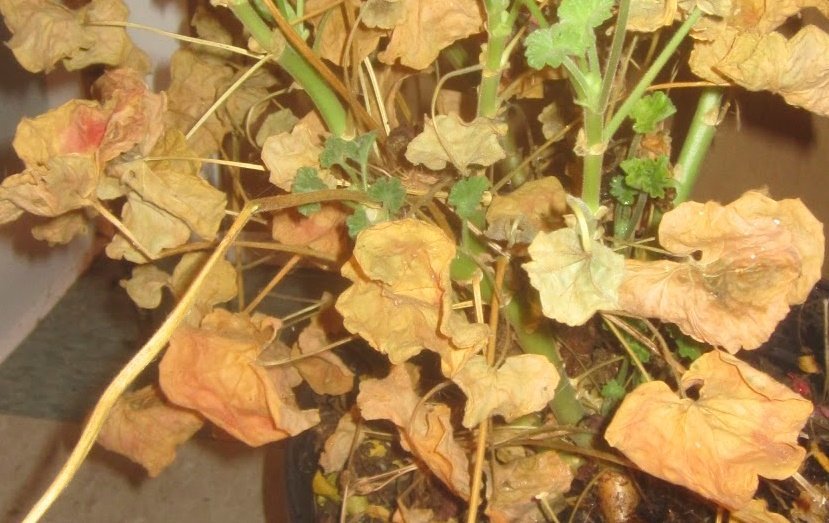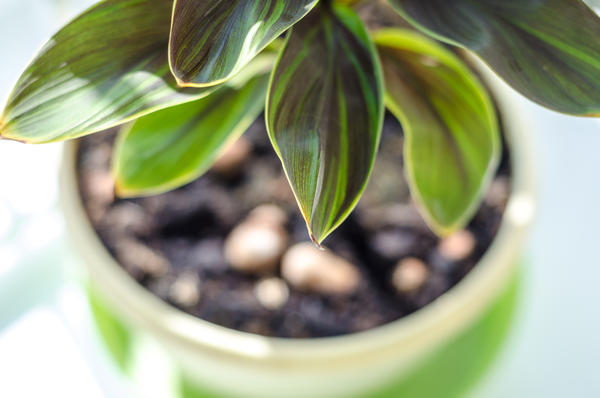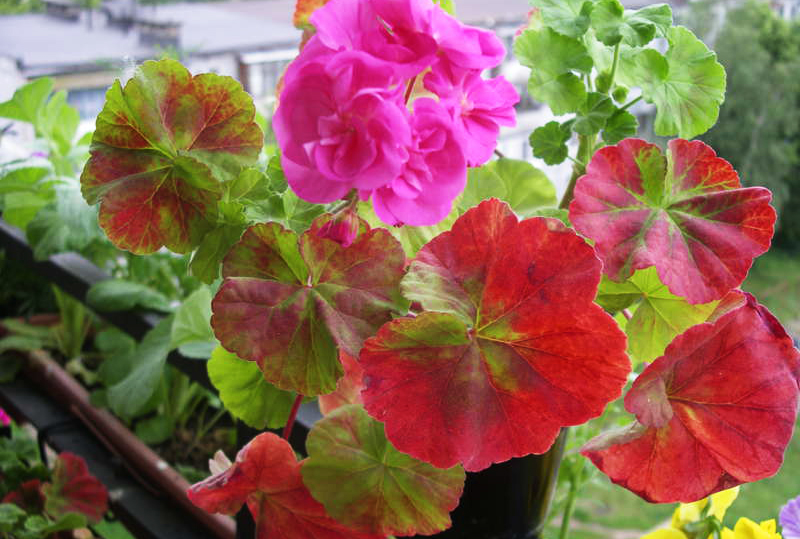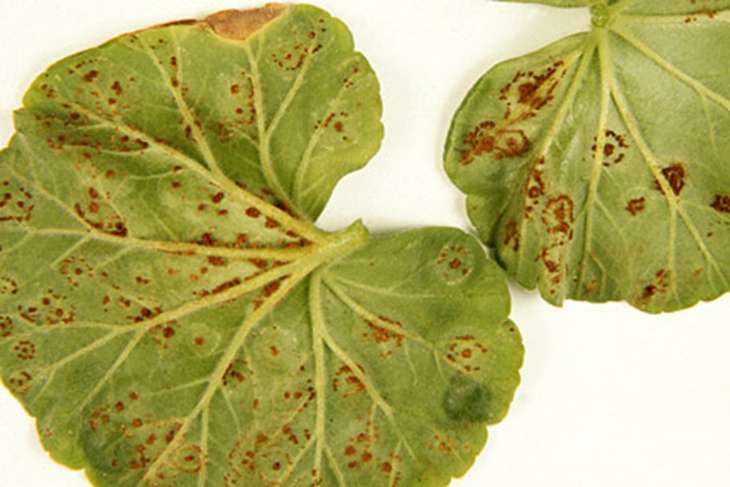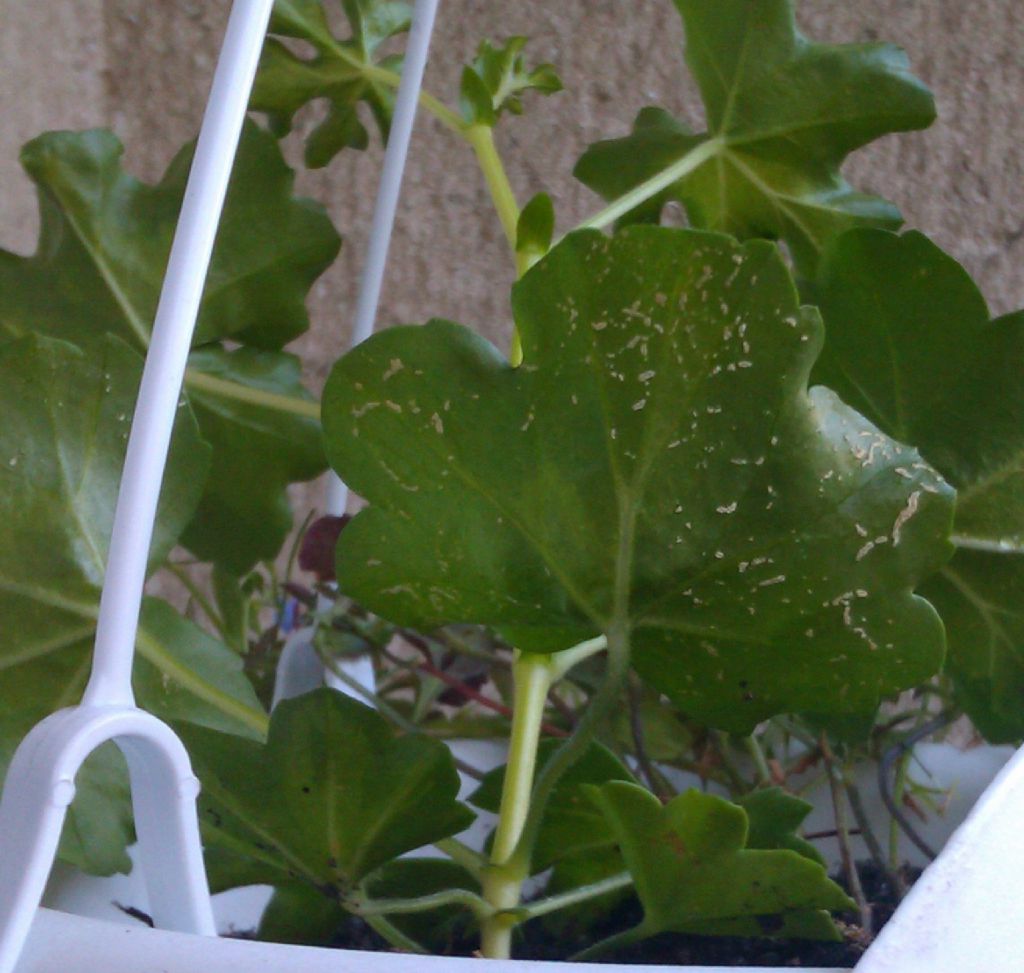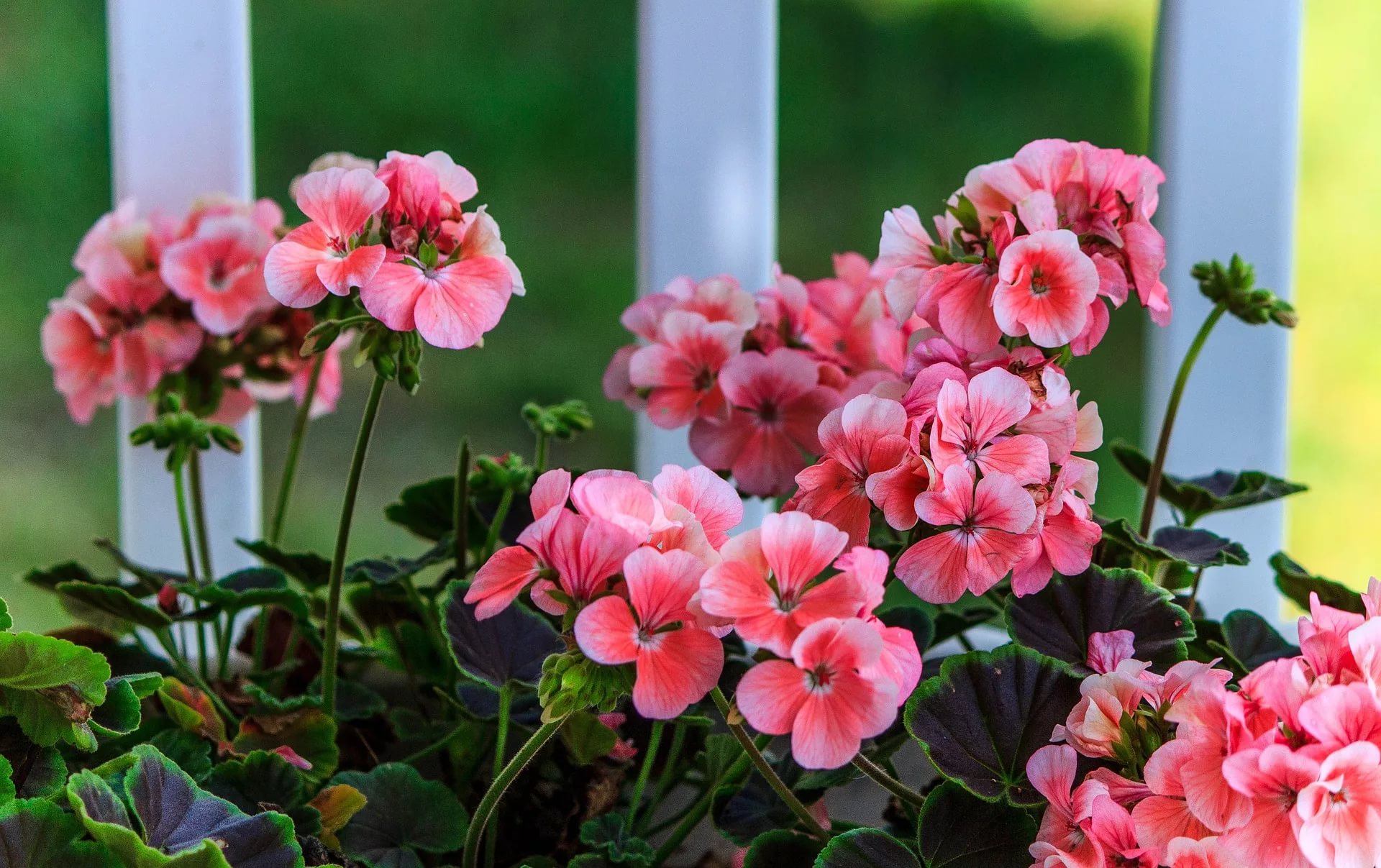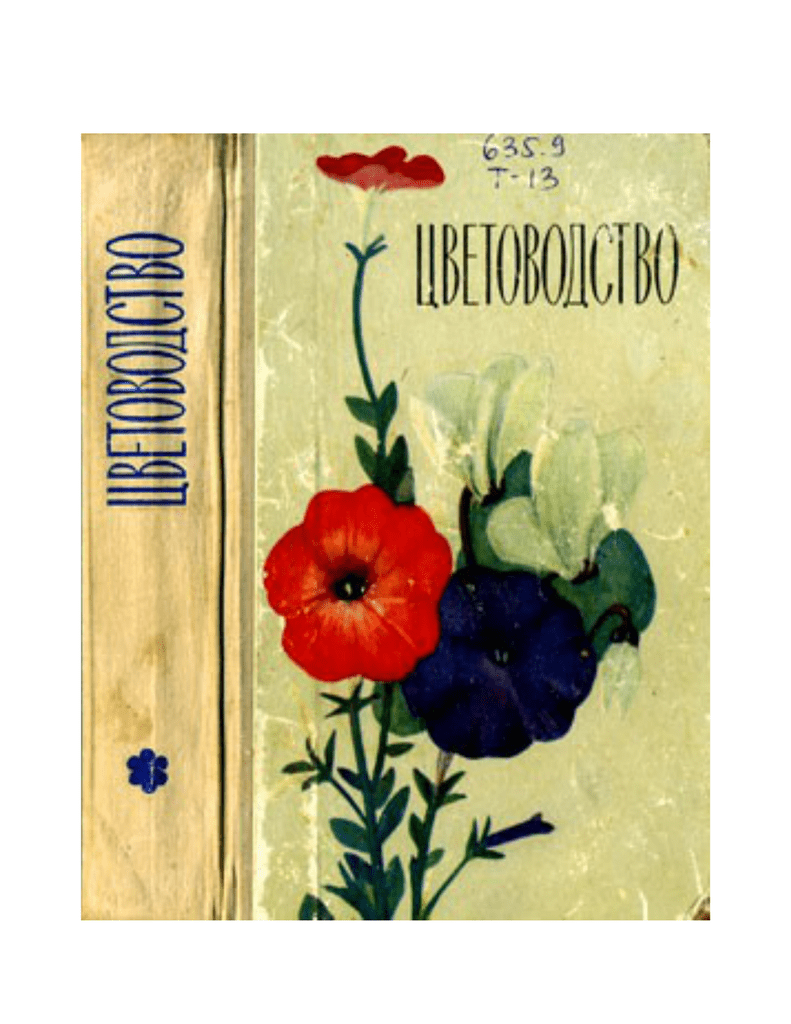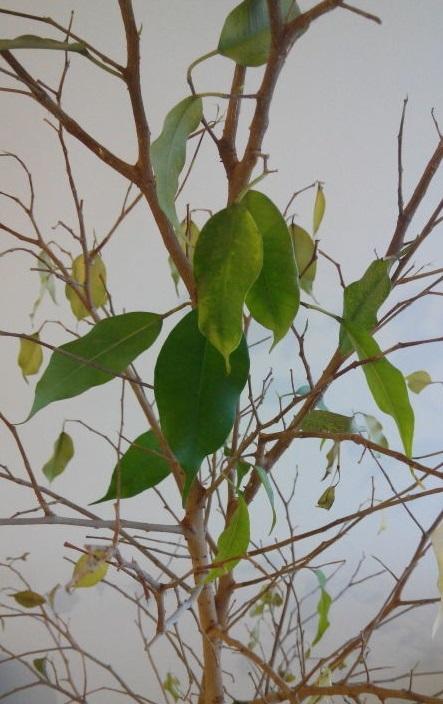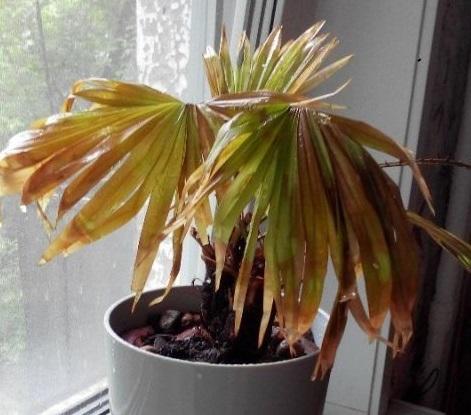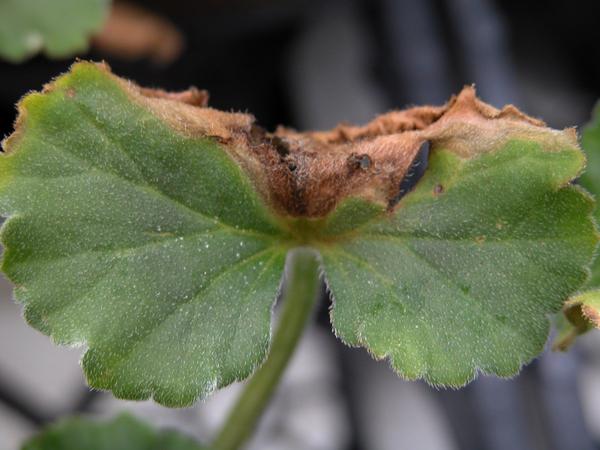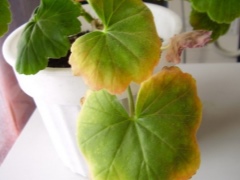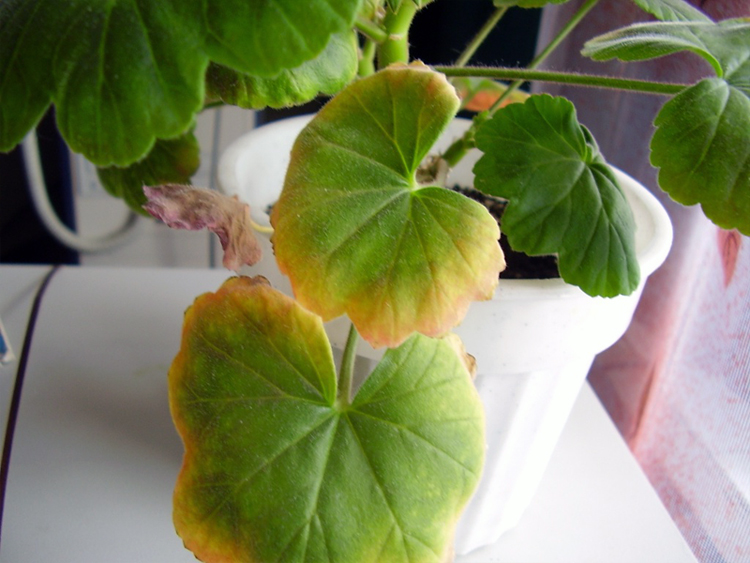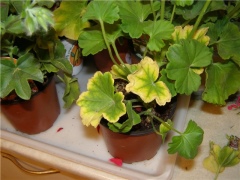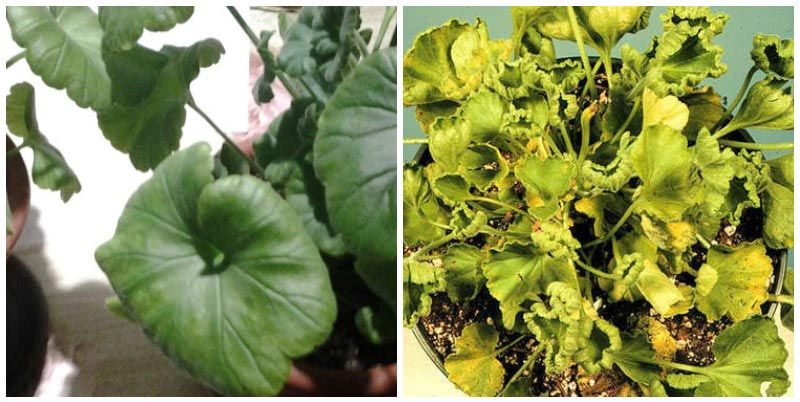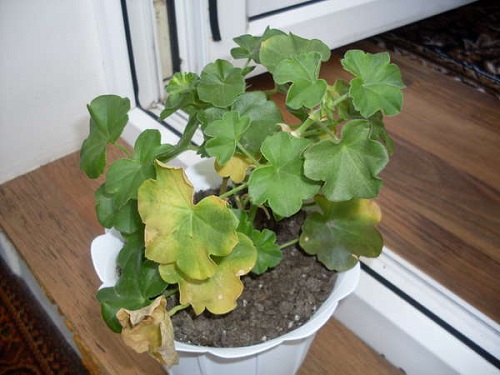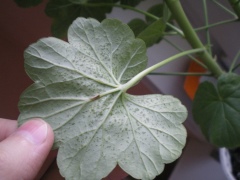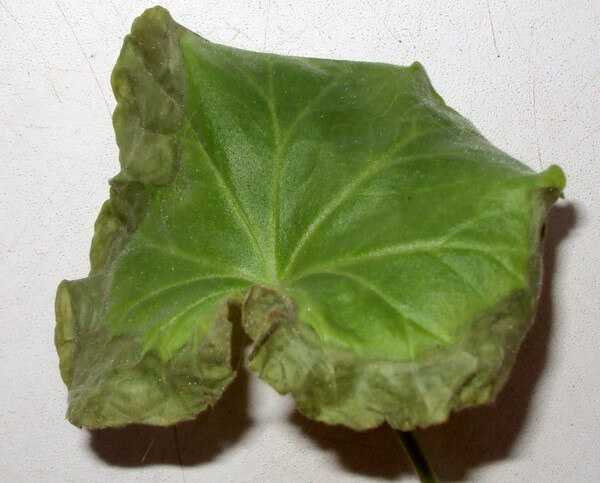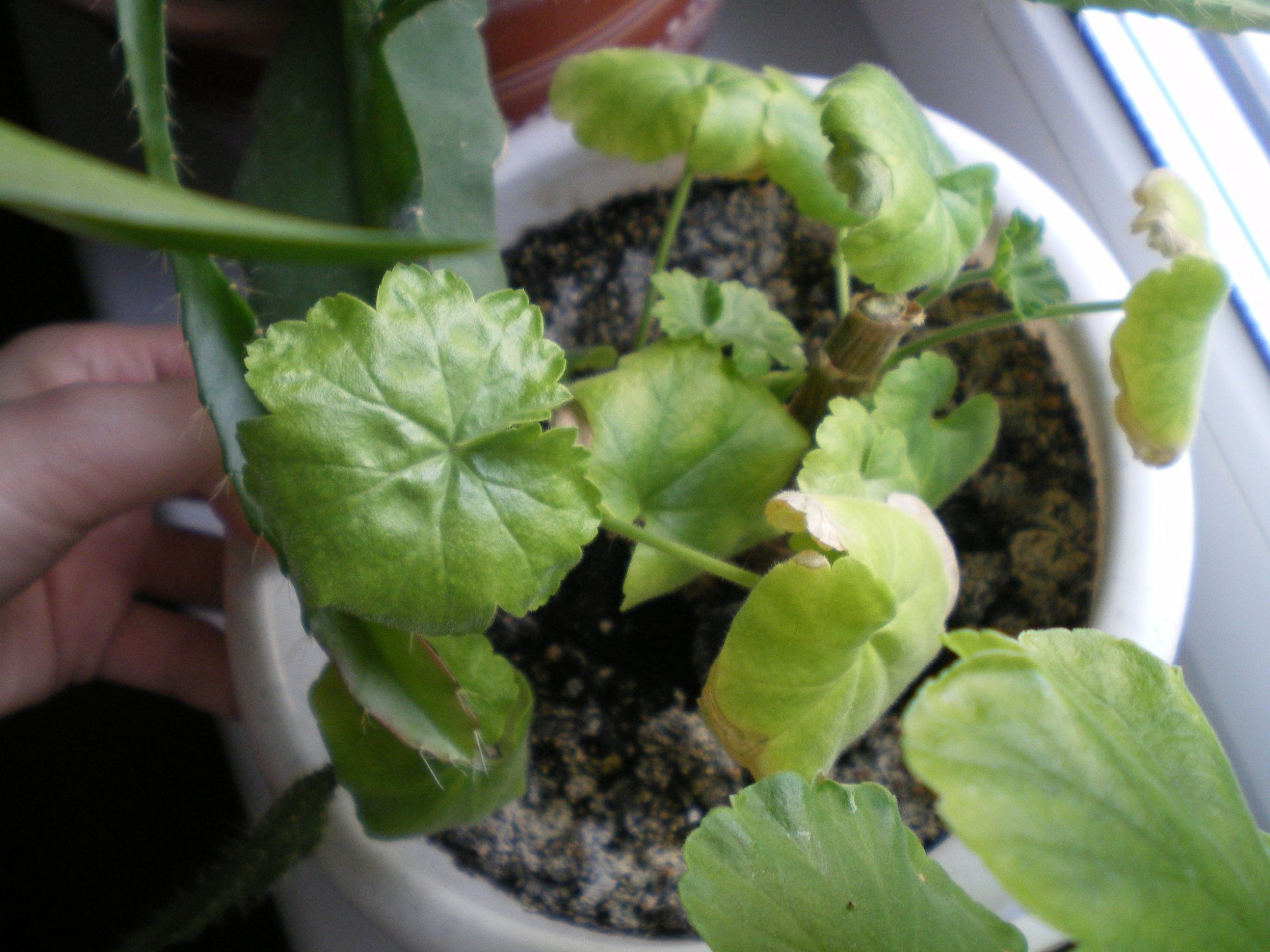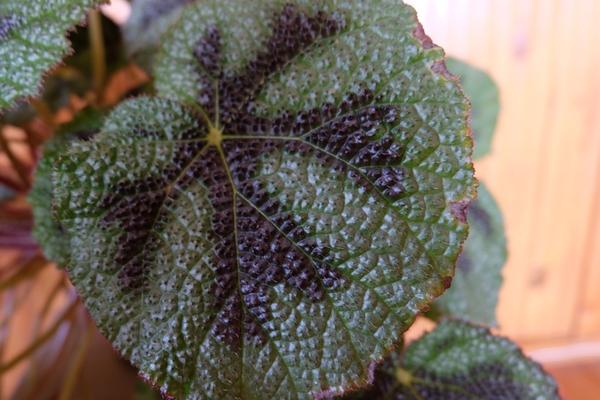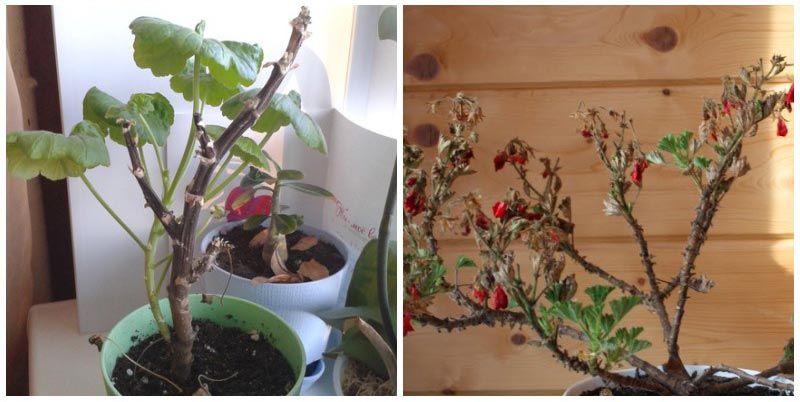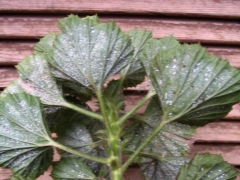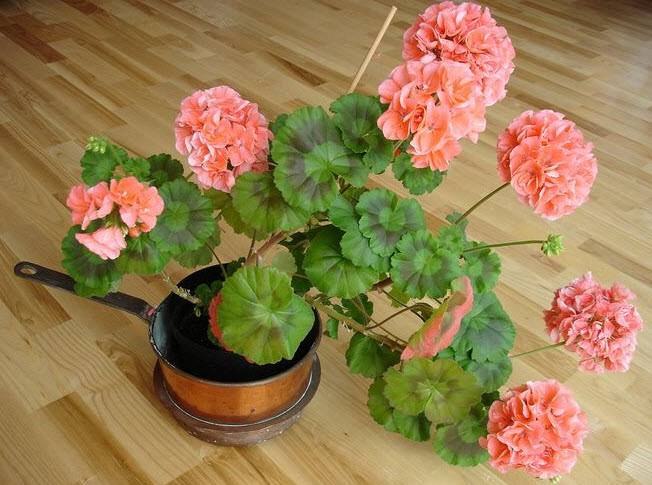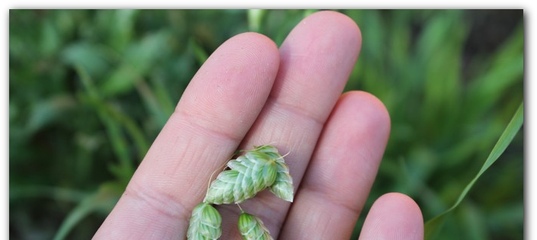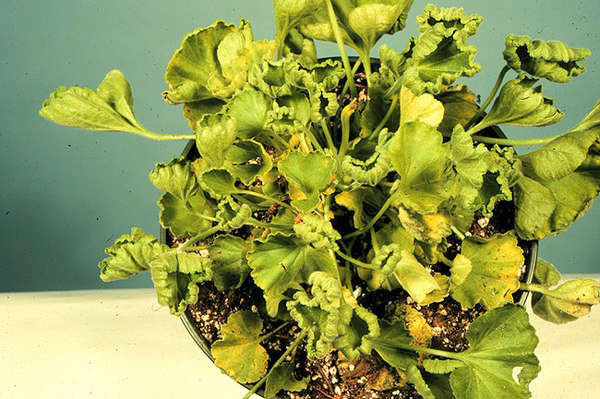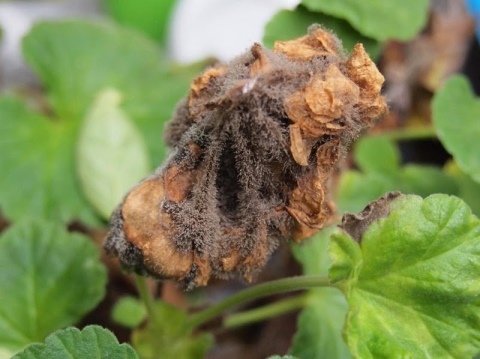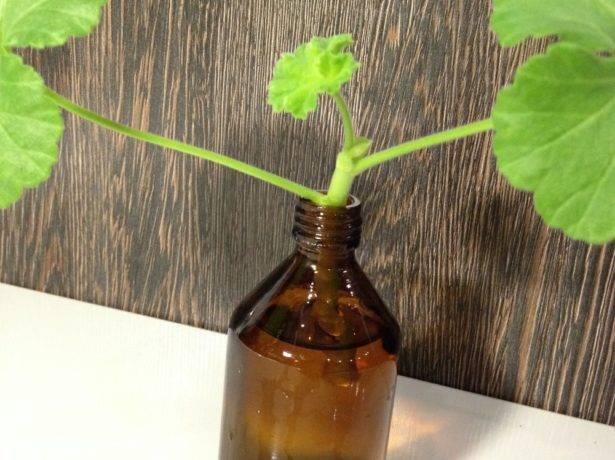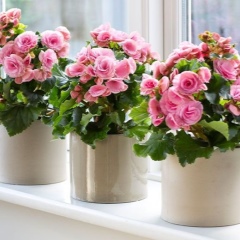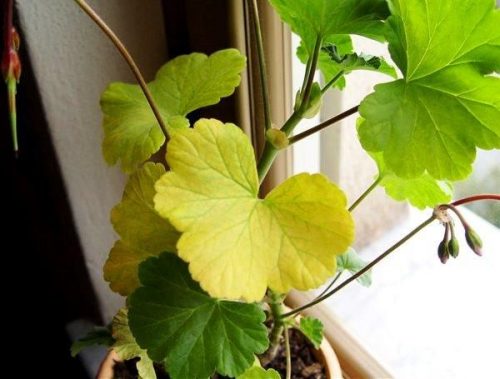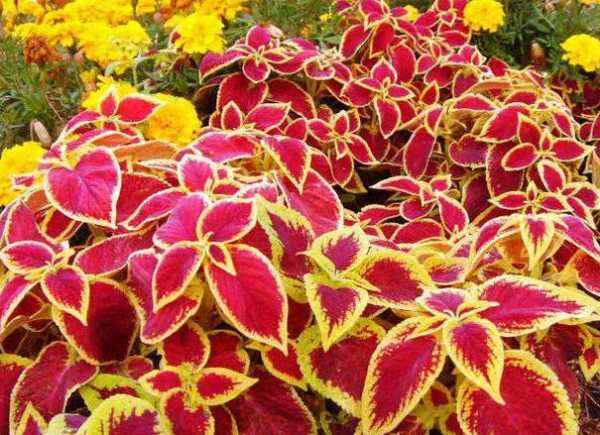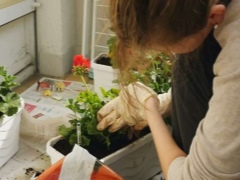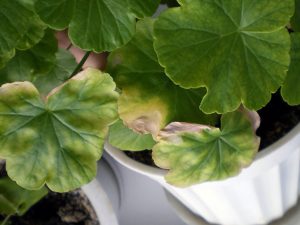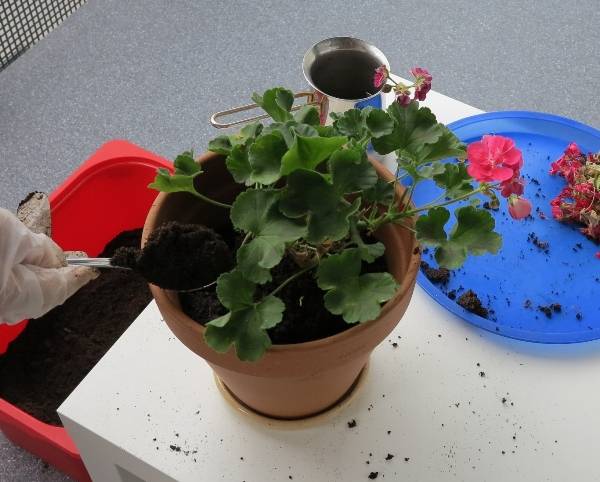Florist tips
For watering geraniums, only settled tap water is used, not cold water. Melt, rain will do
It is important to remember that excess moisture is more dangerous than lack of moisture. Geranium tolerates short-term drying out of the soil more easily than constant waterlogging
In winter, when placing a flower on the windowsill, make sure that the leaves do not touch the window glass. The cold coming from the window leads to hypothermia and even freezing of the sheet plate. The leaf turns yellow and falls off.
Pelargonium is useful to pinch and shape. By removing the top of the flower, the grower stimulates tillering and the formation of new shoots. Once every 2 years, it is advisable to rejuvenate the geranium by cutting cuttings from the mother plant and rooting them.
Single yellowing and shrinking lower leaves on the plant are a normal natural process.
Geranium loves to be taken outside for the summer. There she releases many stepsons and blooms profusely until autumn.
It is important to place the flower in lace shade and not let the plant get frozen. Comfortable air temperature for geraniums from +16 to +28 degrees
Propagating geraniums is easy. Stepchildren and cuttings are used as planting material. They root easily in wet sand or perlite. You can put the twigs in a jar of water, where Kornevin powder has been added. Roots will appear within 2-3 weeks. The best time for cuttings of geraniums is from March to August.
In flowering pelargonium, withering inflorescences should be removed in time, preventing the formation of seeds. This not only preserves the decorative appearance of the plant, but also does not delay the formation of new buds.
A common reason for the absence of buds on geraniums is too high the air temperature in the room.
Irrigation errors
The intensity and frequency of watering directly affect the condition of the geranium. A single violation of the regime does not affect the health of the flower. But with constant waterlogging, the soil sour, and the root system begins to rot. Because of this, the nutrition of the aerial part suffers, which manifests itself in the yellowing of the foliage. If the problem is not corrected, the geranium will die.
Important!
You can determine the overflow by the unpleasant odor emanating from the soil. Another sign is the numerous midges that have settled on the surface of the soil in a pot.
To save a plant, it is not enough just to normalize watering. The putrefactive processes that have begun will continue. In this case, only a transplant with a mandatory revision of the roots and cutting off damaged tissues will help.
The plant is carefully removed from the container, the root system is freed from soil particles and examined. All roots with signs of rot are cut off, capturing part of healthy tissue. The underground part of pelargonium is washed and treated with fungicidal preparations. After drying the roots, the flower is transplanted into fresh soil mixture. So that such problems do not arise in the future, the plant is watered only after the surface layer of the soil has dried, avoiding overflow.
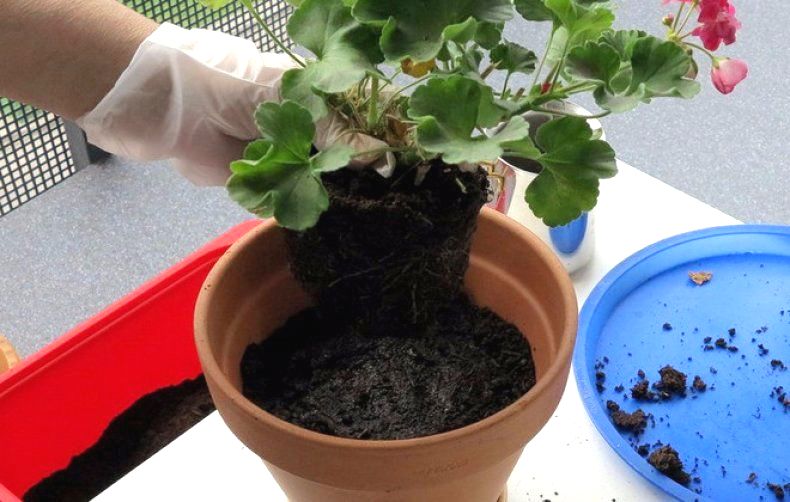
Main reasons
There are a number of reasons why geranium leaves dry and turn yellow.
It is important to immediately inspect the plant in order to determine the source of the problem by other characteristic signs.
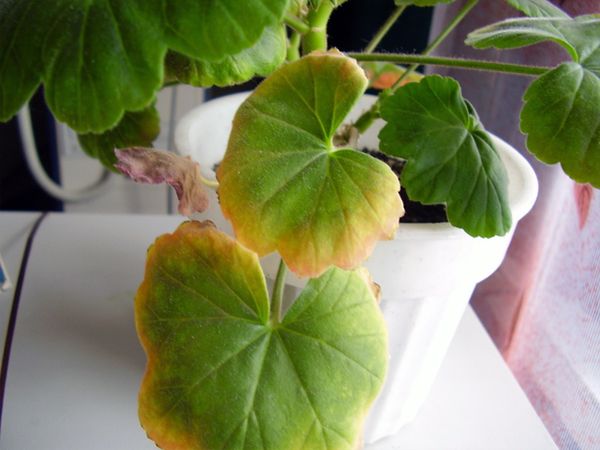
Improper care
If you have a question "Why do geranium leaves turn yellow and dry?", First check the conditions for keeping the plant.
The problem may lie in the wrong lighting. If, along with the yellowing of the leaves, the stem of the pelargonium is disproportionately stretched and it began to bloom rarely and poorly, this indicates a lack of light. The opposite situation is sunburn.Although this plant is photophilous and can withstand direct sunlight, in summer, in extreme heat, geranium leaves can burn out: they turn yellow, and then brighten and dry out.
Often the reason is improper watering. If a yellow border appears at the edges of the leaves, and the affected areas quickly darken to brown, this indicates a lack of moisture. But if geranium leaves turn yellow mainly at the top, we are talking about overflow. In the latter case, a transplant may be necessary. This condition usually occurs due to root rot, which can eventually lead to stem rot and death of the plant. Another reason why geranium leaves turn yellow is a decrease in room temperature.
Please note: if the leaves turn red before yellowing, the problem is just in the cold
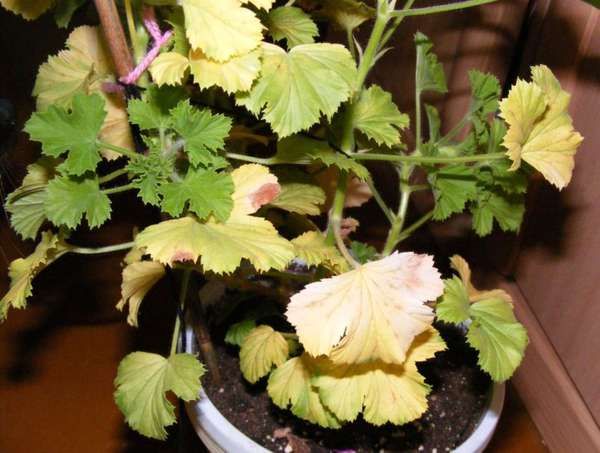
Often, geranium leaves turn yellow due to the fact that the roots have become cramped in the pot. In this case, the edge of the leaf plate first turns yellow, then the whole of it. After a while, the foliage dries and falls off. The buds are not formed, and roots sprout through the drainage hole.
Excess and lack of fertilizers
To the question "Why does geranium turn yellow?" there is one more answer: shortage or excess of the main mineral fertilizers - nitrogen, potassium and phosphorus.
If the leaves turn yellow, this is often a sign of excess nitrogen. But if you notice that the leaves are shrinking on young shoots, and, moreover, they began to wrap inward, this indicates a lack of it.
Diseases and pests
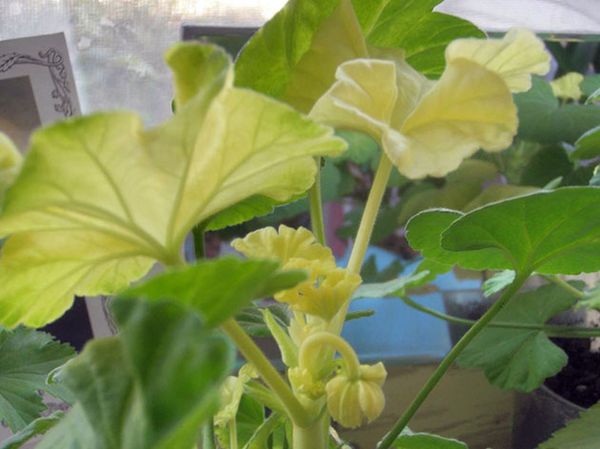
Why do the leaves dry if all the conditions of care are met? Viral, bacterial or fungal diseases of geraniums, as well as parasites (insects) can be a problem.
- A symptom of a viral infection is a mosaic: small yellowed spots appear on different parts of the leaf, gradually merging. The sheet plate itself contracts and deforms. Unfortunately, this disease cannot be treated, and the diseased plant should be destroyed so as not to infect the neighboring ones.
- If the yellow spots turn black and dry from the inside, moreover, veins darken on the leaf plate, the likely cause is bacteriosis.
- If brown spots and swelling appear on the leaves before yellowing, this is rust, a dangerous fungal disease. It can also be diagnosed by the appearance of a fluffy plaque on damaged areas.
- A dangerous parasite for pelargonium is the spider mite. This small insect drinks the juice of the leaves, which is why discolored areas appear on them. Other signs of the pest: small dots on the leaf, sticky or covered with fine cobwebs.
- Whitefly is a small insect with white wings, it also feeds on plant sap, which makes it dry and wither. Both adult insects and larvae are dangerous. Whitefly is easy to spot - just look at the underside of the leaves.
Common Leaving Causes of Geranium Leaves
Lack of proper care can lead to the fact that the plant will not bloom or even begin to wilt. It is not enough to plant geraniums in accordance with the instructions, if then certain rules are not followed.
Too infrequent or frequent watering
Swampy soil is not the best option for the development of geraniums, but it also dislikes absolutely dry land. It is recommended to moisten the soil as the top layer of the soil dries up.
Important! In the fall, it is necessary to begin to reduce the number of irrigations, since in winter it is needed at a minimum.
Lack of drainage layer
Drainage prevents the formation of a bog in the flower pot. Home care for geraniums will be much easier if you add a layer of expanded clay or crushed stone to the bottom of the pot.
Cramped pot
Selecting a flower pot is required according to the size of the plant's root system. Geranium begins to react to lack of space by yellowing foliage. This is due to the fact that in the soil there is not only insufficient nutrients, but also air for the flower.

Cramped Geranium Pot
Errors in care during the dormant period of the flower
In winter, the flower is required to be kept under certain conditions that differ from those that are necessary during the growing season. First of all, it is worth taking the flower to a cooler place, protecting it from drafts. It is not recommended to place the plant pot next to heating elements. Also, do not be zealous with watering. The amount of water and frequency should be reduced, since less water is required during the rest period, especially in a cold environment.
Lack or excess of feeding
The amount of mineral components in the soil is constantly drying up, and therefore from time to time they need to be replenished. Depending on the time of year and the life cycle of geraniums, fertilizers of different compositions are required. In the spring, nitrogen is needed to a greater extent, and in the summer - potassium and phosphorus.
Note! It is not always necessary to feed the plant if its leaves turn yellow. Perhaps this is a reaction to an excess of minerals in the soil.
Incorrect geranium placement
It is worth taking care of the correct placement of the flower pot in the house. Although geraniums love sunlight, you need to dim it a little. Fresh air is good for the plant, but because of this, you should not place the flower in a draft.
In winter, it is worth taking geraniums out to a cool room, but in this case, you should not leave them on the windowsill, since the sheets touching the glass can get frostbite. Being near heating appliances is also harmful.
High air humidity
Air humidity should be in the region of 50-60%. With a decrease and increase in this level, geranium begins to feel bad and signal this by yellowing its foliage. When the conditions are normalized, this reaction will disappear.
Transplant errors
Any flower undergoes transplant stress. After carrying out this procedure, it is worth observing the plant more closely.
Important! It is recommended to reduce the number of transplants to a minimum, to carry out in extreme cases, as you can damage the geranium or choose the wrong substrate

Substrate preparation
It is recommended to undertake the preparation of the soil. If this is not possible, it is worth purchasing a special substrate for ampelous plants. The soil should be moderately loose, slightly acidic or neutral acidity. It is worth making sure that there is a drainage layer in the pot. To prepare the substrate, you will need to take in equal amounts of humus, turf, peat and river sand.
Note! When transplanting, it is necessary to inspect the root system, carefully shaking off excess soil from it. It is recommended to cut off damaged roots with sharp scissors or a knife, and treat the cuts with charcoal
The transplant procedure is required after a 2-hour break after abundant watering.
The nature of the yellowing of geranium leaves
Many growers are faced with the fact that geranium leaves turn yellow. There are many reasons why this can happen, and therefore a certain approach must be found to the flower. Depending on the nature of the yellowing, it is determined what exactly became the reason for the development of the disease.

Healthy indoor plant
Around the edges
The edge of the leaf most often begins to turn yellow in winter. This indicates improper care of the plant. In summer, the yellowing of the lower leaves indicates a lack of moisture, which occurs after moving the flower pot from the street to the room. This is how the flower reacts to climate change, after acclimatization everything returns to normal.
Note! The yellowing of leaves in royal geraniums can occur due to a cramped flowerpot. In this case, the plant is transplanted into a larger container.

Yellowing around the edges
Spots
The appearance of spots on geranium leaves indicates the presence of diseases. The leaf plate begins to brighten in places, the spots turn brown, dry out and the leaves begin to fall off.If you do not start to fight the disease, the indoor flower may die. The symptom manifests itself when infested with pests that settle on the leaves and feed on their juices:
- nematodes;
- aphid;
- Putin tick;
- caterpillars;
- whitefly.
It's important to know! Fight pests with insecticides. They also practice preventive methods to prevent their occurrence.
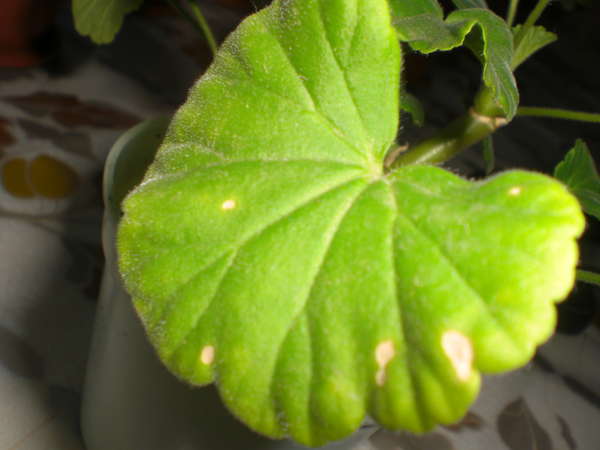
Yellow spots on the leaves
Yellowing is accompanied by wilting of the plant
If the flower begins to wilt unexpectedly, then it may have root problems (root rot). The disease in a short time can ruin the plant. It is recommended to cut the stalk and plant it. The instruments are preliminarily disinfected. Geranium leaves turn yellow and dry what to do?
Yellowing turns into blackening
The leaves are an indicator of the state of the plant. They show how correct care is taken for geraniums. If the conditions are not met, yellow spots may appear on the leaves, which subsequently turn black.
Compliance is checked by touch. If the spots are dry, the air in the room is too dry. The solution is to increase the humidity. Wet spots indicate a mealybug infestation. In this case, the geranium throws off the leaves. Worms are found by the sooty fungi that form a black bloom on the plant. Treatment is carried out with insecticides.
What to do?
The above signs of curling geranium leaves can be used to diagnose and find out the specific cause of these troubles. In accordance with the established reason, the necessary measures are taken to save the plant.
Humidity test
Geranium tolerates drier soil than excess moisture. This is why pots must be well drained and retain little moisture.
Geraniums will not be able to withstand overcrowded saucers for long. Otherwise, the flower plant can get sick from waterlogging.
Always water the flower on top of the soil, and then drain off any excess. If this condition is not met, the geranium leaves will continue to dry. If there is a lack of moisture, increase the amount of watering the plant.
Lighting
Geranium loves the sun, but its influence shouldn't be too strong. When placed in places where the light is very bright, the leaves of the geranium turn yellow-red, and the old ones are affected first of all (how to help the geranium, in which the leaves turn red, is described here). Place indoor plants where they will have shade in the afternoon when sunlight is most intense.
Reference! In the absence of light, increase the amount of light at the first sign of fading. Reduce the room temperature by 3 ° C. Reduce watering and stop feeding.
Top dressing
The fast-growing geranium has small root systems that are vulnerable to phosphorus and trace element deficiencies. Therefore, it is necessary to feed the plant with a liquid fertilizer with a high phosphorus content every two weeks during the growing season.
For example, a tablespoon of instant fertilizer should be diluted with 3 liters of water to compensate for nutrient deficiencies and stimulate proliferation. Be sure to remove damaged leaves to prevent disease outbreaks (read more about geranium diseases and pests here).
When is it too late to help?
- If the geranium has dried up, the first step is to examine its roots. If they are elastic and white, then all is not lost. It is necessary to transplant the plant into the prepared soil - it may be possible to reanimate it. If the roots are sluggish and covered with dark spots, then the bush is unlikely to be saved.
- If the geranium is partially dry, you can cut healthy cuttings, put them in water for germination, and then plant them.
- When diseases or pests are the cause of drying, then in case of severe damage, it is better to abandon attempts to save the geranium. This is often not possible.Pathogenic spores and parasite larvae remain deep in the soil - it can be very difficult to remove them completely.
Improper care of geraniums, first of all, affects the foliage - they begin to hurt and change color or curl. Why this happens and what to do when a problem occurs, read our articles.
Yellowing and drying of leaves occurs for a number of reasons, but if you know how to create conditions for the comfortable existence of a plant, then this problem will not disturb. If this did happen, then you should not despair - you need to devote a little time to the plant, and after a while the foliage will again become beautiful and green!
The plant is withered: resuscitation at home
There are situations when the geranium has dried up completely. How to save a dead plant:
- Inspect the dried flower: if a living trunk remains, then the geranium should be removed for the winter in a cool place. The stem can grow back in the spring.
- If the stem is dry, dig out the root and place it in water, if the root gives new roots, then plant it in the ground.
TIP: To create favorable factors for the growth of geranium and prevent its dryness and diseases, it is necessary to perform a set of preventive procedures.
Preventive measures:
- carry out a neat, timely transplant into suitable pots;
- conduct moderate watering according to the degree of drying of the soil surface;
- establish the location of the geranium in a place protected from drafts;
- apply organic and mineral fertilizers (during the flowering period - twice a month);
- diagnose and eliminate pests;
- when yellow leaves appear, their timely removal is required.
Despite the unpretentiousness of geraniums, some effort is required to grow beautiful, well-groomed plants. Any disease can be cured if the necessary measures are taken correctly in time.
Plant buds can be helped to bloom. Even a dried flower can be reanimated. By creating the right conditions, the owner will be rewarded with an elegant blooming space.
Tightness
Signs. The leaves turn yellow evenly throughout the plant, first from the edges, then as a whole. Gradually dry up, leaving a bare trunk. There is no flowering and is not expected. The roots are visible from the drainage hole.

Solution. The reason is trivial: the geranium has become small in its pot. This plant is quite loyal to small containers. Transplants are required every 3-4 years. But sometimes, with good care and high-quality feeding, the flower grows too quickly. This is especially true for young plants.
Just transplant the geranium into a larger home. Not much. Otherwise, you will not see flowers in the next 2 years. The plant will begin to intensively grow the root system to the detriment of foliage and buds
It is very important not to feed him for 3 months after transplanting. It's a time of acclimatization and getting used to
By the way, if you notice thickenings, bumps or knots on the roots, then we sympathize with you. Geranium is affected by root nematode. This can also provoke yellowing and drying of the leaves. Unfortunately, there is no cure for this problem. You will have to throw out the entire plant as a whole, along with the soil and the pot.
Even prolonged soaking of the container in bleach or boiling does not give 100% of the result of getting rid of the larvae and the worms themselves.
After finding such nasty things, you will have to inspect all neighboring plants. Often they also have to be disposed of. Do not buy plants in spontaneous markets and avoid a similar fate.
Those who truly love home flowers will never be worried about why geranium leaves turn yellow and dry. What to do? - they know very well too. This article will help everyone else, including beginners.
Pests and diseases
If the geranium grows in the right conditions, it is properly looked after, and the leaves still turn yellow, then the reason is a disease or pest attack. It is enough to examine the flower to determine the "enemy".
Viral diseases
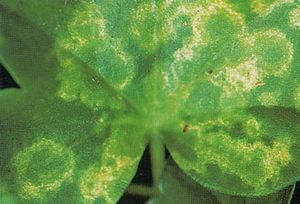
If geranium has slowed down its growth, its branches are twisted, yellow or light green spots or dots appear on the leaves, and white stripes appear on the flowers, then the plant will have to be destroyed, since it is affected by a viral infection, of which there are a great many.
Whitefly

The white midge that lays eggs on geranium leaves is a vicious whitefly butterfly (especially king geranium). Its larvae suck out all the juices from the leaves of the plant, so they turn yellow. They get rid of the pest with special means.
Spider mite
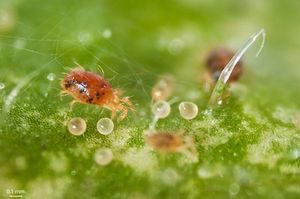
If yellow spots appear on the leaves of the geranium and the leaves fall off, and the remaining ones and the stem are entangled with a cobweb, then the plant is infected with a spider mite. At the initial stage of infection, the flower is treated with a special solution several times.
Mealy worm
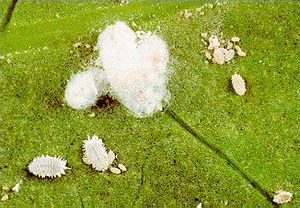
Geranium leaves wither, turn yellow and fall off, a white fluff has appeared on them - these are signs of a mealyworm defeat. If the disease is in its initial stage, then it is enough to wipe the leaves with alcohol. And a neglected case will have to be treated for a long time, daily treating the plant with a special preparation.
Bacterial diseases
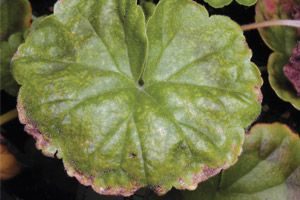
If geranium leaves become dry at the edges, brown spots appear on them, dark streaks appear on the inside, then this is a sign of a bacterial disease. The affected leaves are cut off. Peduncles are cut off. Keep track of watering. It is advisable to change the soil, especially if the smell of dampness, and rinse measles in a weak solution of potassium permanganate to stop root rot.
The health of indoor geraniums rests on "three whales":
- Lighting;
- Temperature;
- Humidity.

